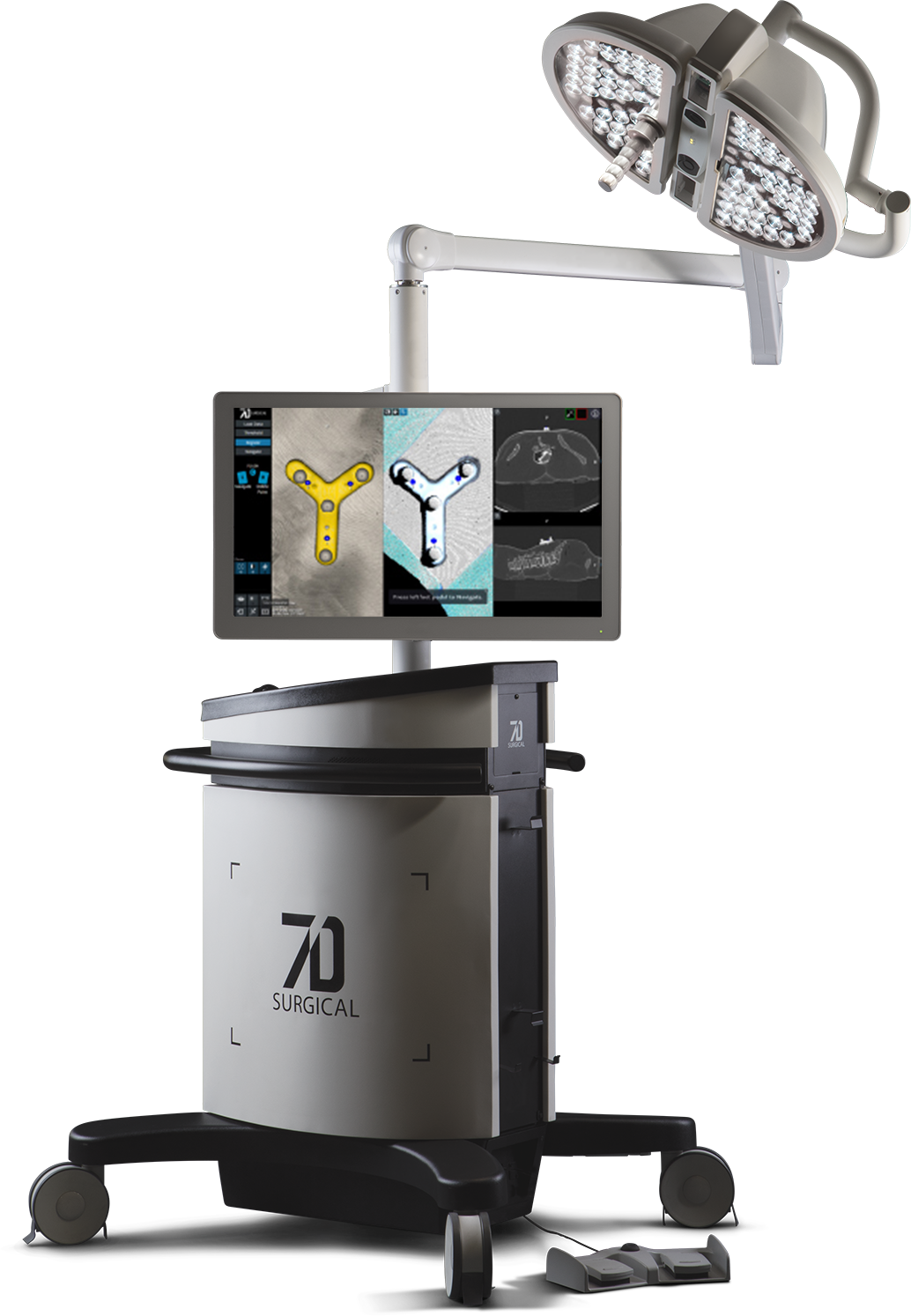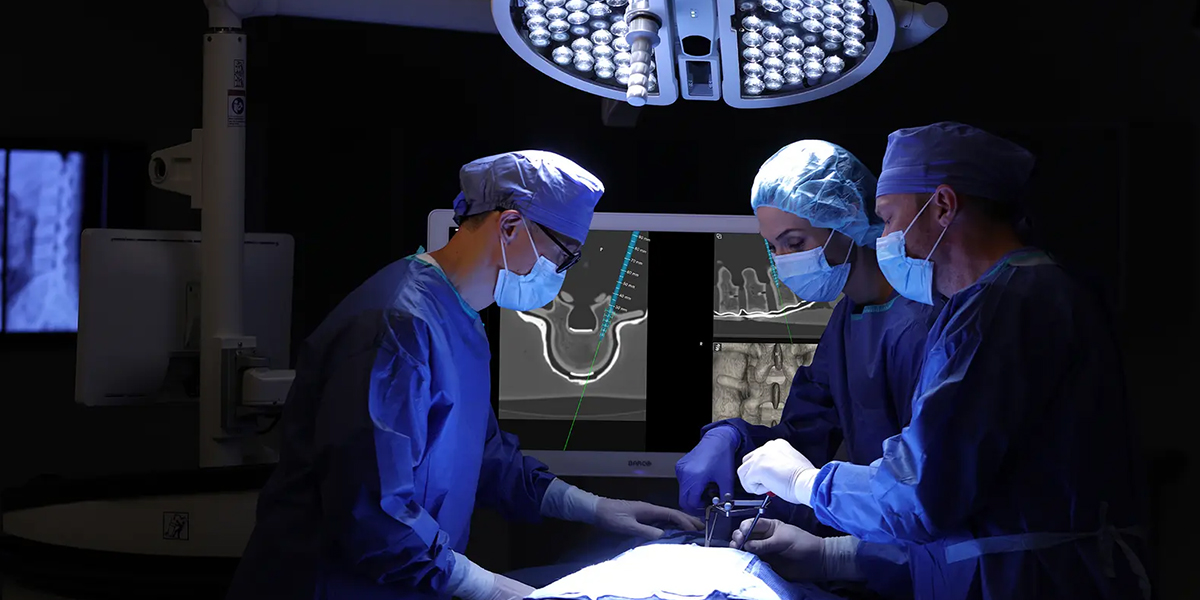THCDS is First Texas Hospital to Add 7D Surgical FLASH Navigation System – Percutaneous Module
Every year, as new technologies are developed, spine surgery advances, enabling surgeons to perform procedures in a more minimally invasive manner. One of the latest of these advancements is the new 7D Surgical FLASH Percutaneous Module Navigation.
Texas Health Center for Diagnostics and Surgery (THCDS) in Plano, Texas, is the first and, to date, the only hospital in Texas offering the 7D Percutaneous Module, a fast, accurate tool for use in minimally invasive spinal fusion surgery. Instead of large cuts in the skin, the 7D Percutaneous Module enables surgeons to perform spinal fusion with small, puncture-like incisions.
Think of it as sophisticated GPS navigation for back surgery – a tool that helps surgeons pinpoint exactly where to focus.
 “A spinal navigation system allows surgeons to interact with a virtual three-dimensional rendering of the patient's spine to perform spinal procedures without the need to visualize the spine directly,” said Peter B. Derman, M.D., a spine surgeon on the medical staff at THCDS. “This minimizes collateral soft tissue damage, allowing for less post-operative pain and faster recovery.”
“A spinal navigation system allows surgeons to interact with a virtual three-dimensional rendering of the patient's spine to perform spinal procedures without the need to visualize the spine directly,” said Peter B. Derman, M.D., a spine surgeon on the medical staff at THCDS. “This minimizes collateral soft tissue damage, allowing for less post-operative pain and faster recovery.”
According to the manufacturer, 7D Surgical, the “7D” stands for seven degrees of freedom, meaning the device is constantly tracking the position of each vertebra through time in three dimensions, across the X, Y and Z axes, as well as the rotation along each axis over time.
“7D Navigation allows us to be more accurate and more efficient,” said Dr. A. J. Rush, a spine surgeon on the medical staff at THCDS. “Improved accuracy allows for, better, more consistent results. Improved efficiency means, patients spend less time on the operating table and less time under anesthesia. 7D lends itself to minimally invasive surgical techniques that involve smaller incisions and ultimately lead to faster recovery for patients.” (As with any medical procedure, of course, results may vary.)
With 7D, the surgeon can plan for the surgery and navigate inside the spine. That’s crucial because otherwise the surgeon’s vision is limited to the areas made visible by cutting and moving other tissue. With machine vision, digitized information allows the surgeon to “see” areas that would not otherwise be visible to human eyes.
“Traditional surgical techniques require that the surgeon directly see the spine,” said Dr. Derman. “This necessitates disrupting the important overlying muscles in order to provide this view. Minimally invasive surgery involves not only smaller incisions but also preservation of these important muscular stabilizers.” 
Advantages of the 7D system include more precise navigation, improved patient safety, decreased surgical time and reduced recovery time.
Rush adds that the 7D system is not robotic and does not perform the surgery itself.
“It’s more like an extremely accurate and reliable road map or GPS,” said Dr. Rush. “The 7D guides me while I’m doing the surgery, but it is not making any decisions. The surgery itself is still completely within the surgeon’s control.”
 All these advantages add up to less discomfort and less downtime that requires the patient to miss work or other normal activities. But the benefits go even deeper.
All these advantages add up to less discomfort and less downtime that requires the patient to miss work or other normal activities. But the benefits go even deeper.
“With the opioid crisis in the news, patients are understandably more concerned about taking narcotics for post-operative pain,” Dr. Rush said. “When we minimize the time in the operating room and make smaller incisions, the patient in most cases will need fewer narcotics. Some can even avoid narcotics entirely. Multiple studies have shown that minimally invasive spine surgery decreases narcotics utilization. That leads to a better overall long-term outcome.”
“Many patients have heard that, ‘If you get one back surgery, you’re going to be a back patient for the rest of your life,’” he said. “That’s changed, because of the advances in our training and our technologies and the research that’s been done. Spine surgery is vastly different than it was even five or ten years ago, and our results are much more consistent.”
Said Dr. Derman: “The 7D Surgical FLASH Navigation System is a truly valuable tool in the tool kit of a minimally invasive spine surgeon.”
Ready to take the next step?
If you have additional questions about our spine services or would like more information about treatment options, please call our patient navigator at 972-543-1250.
1. https://ctorthostvincents.org/procedures/advanced-technologies/7d-surgical-flash-navigation-system
